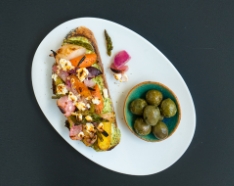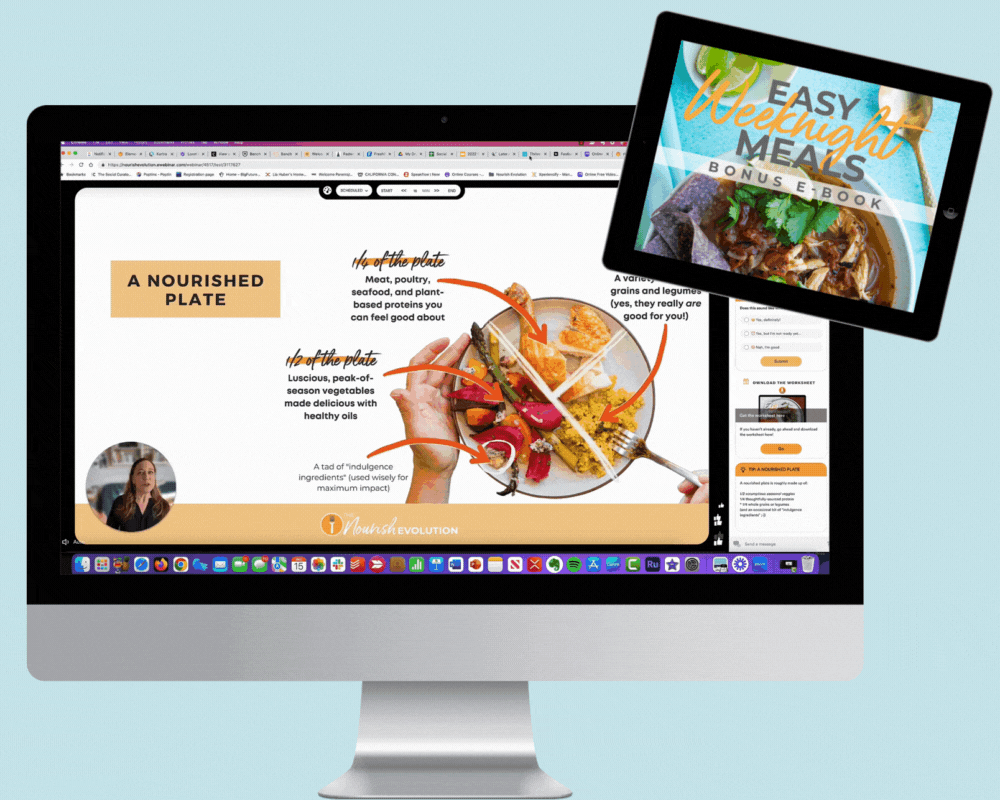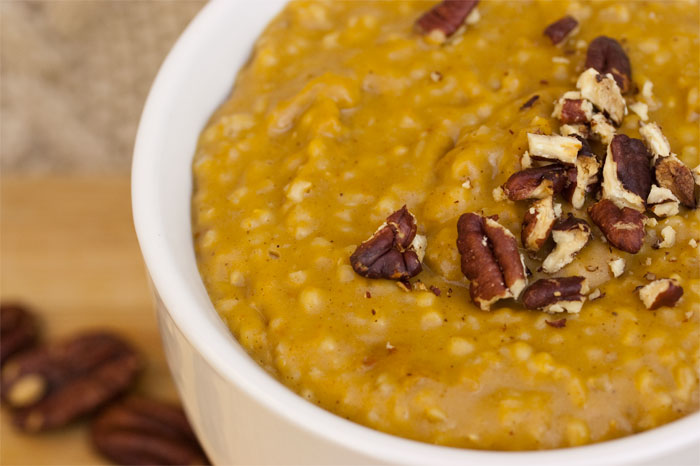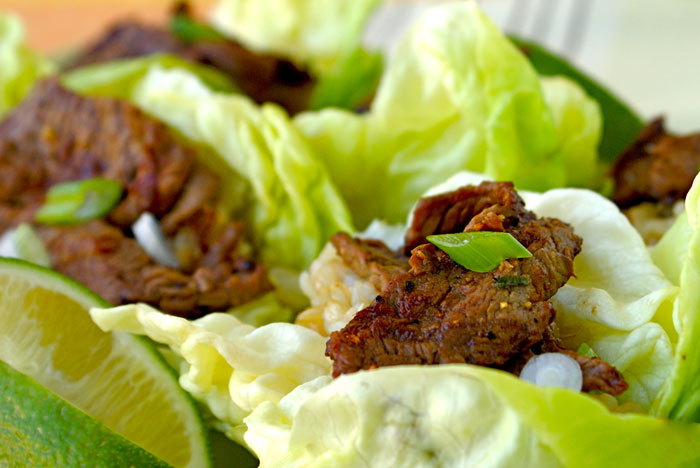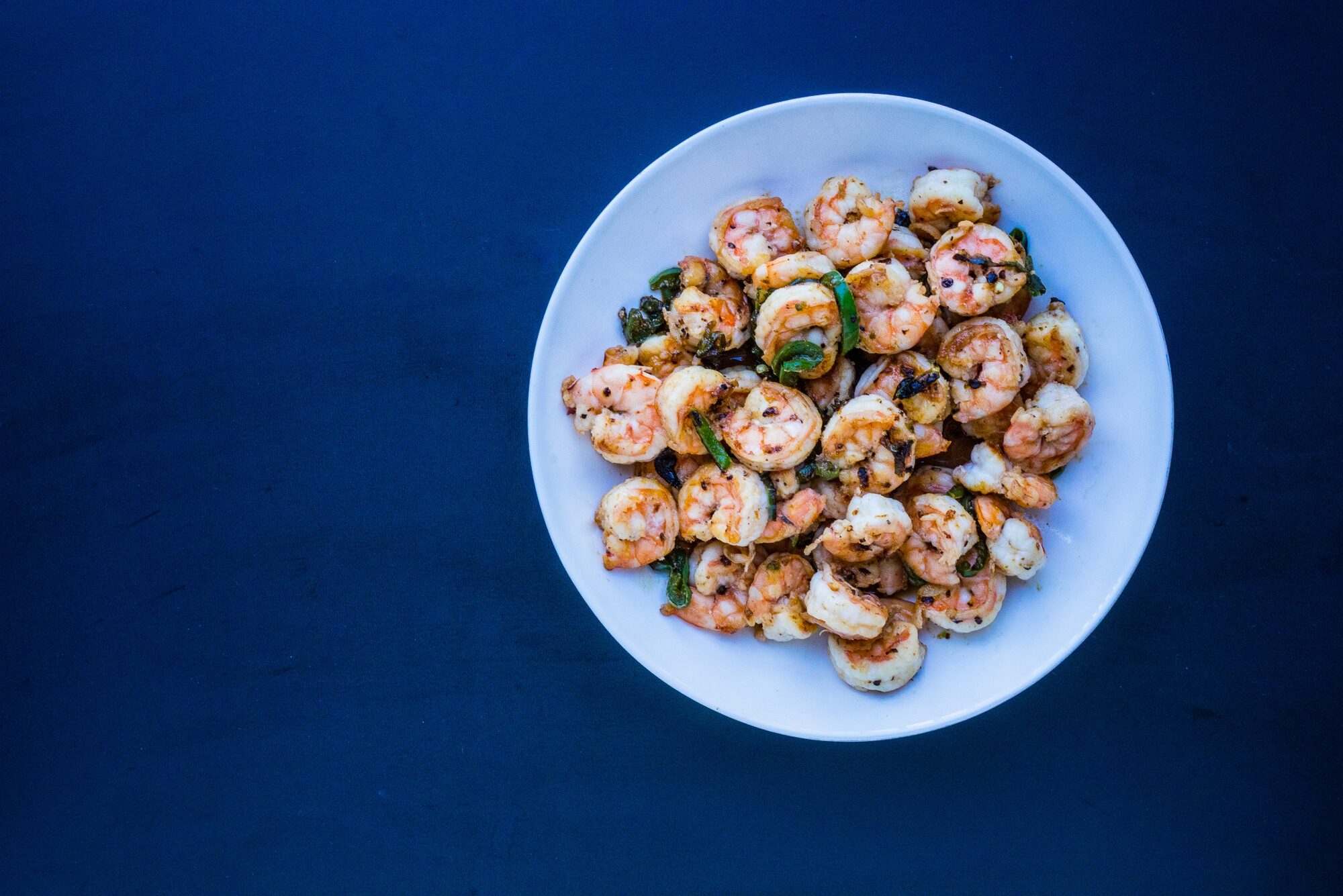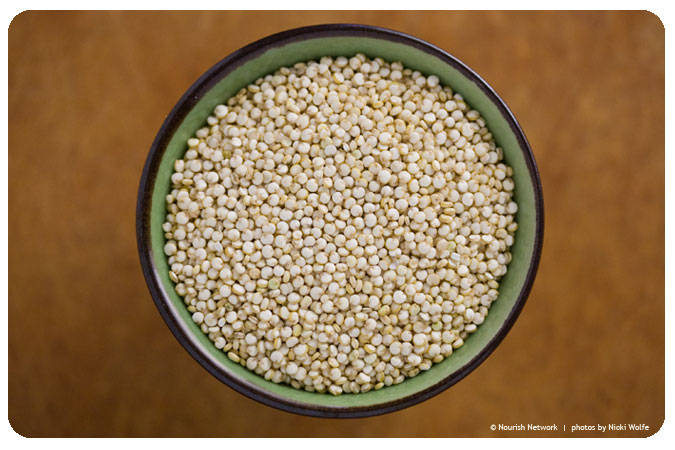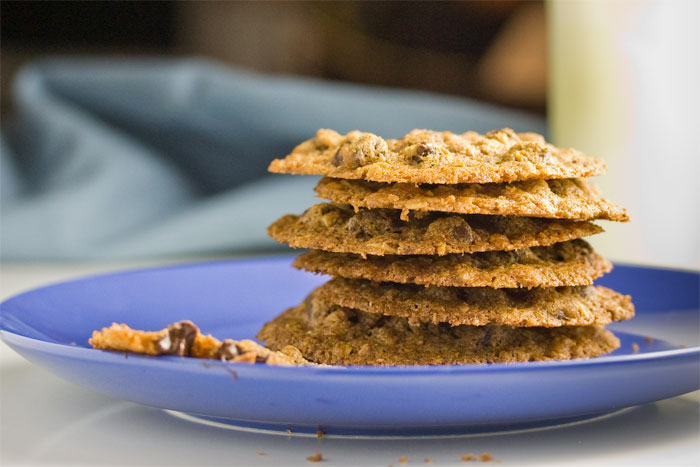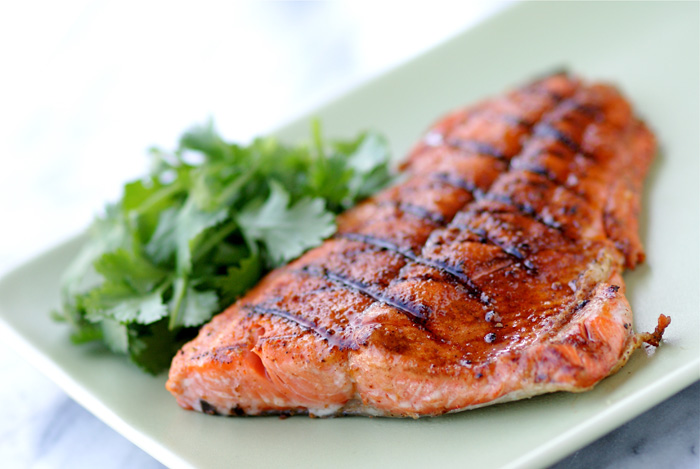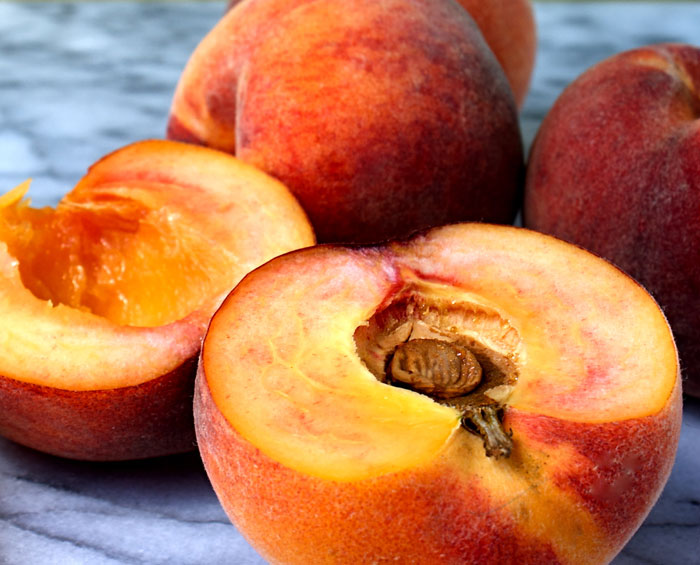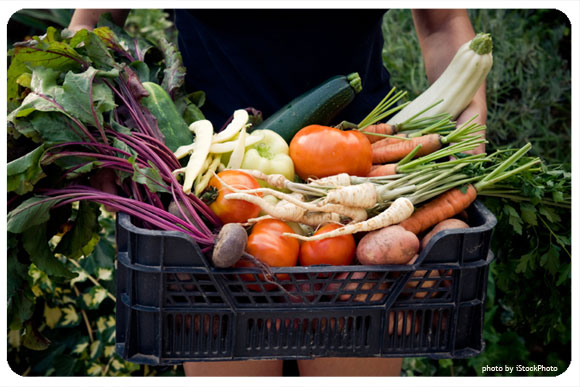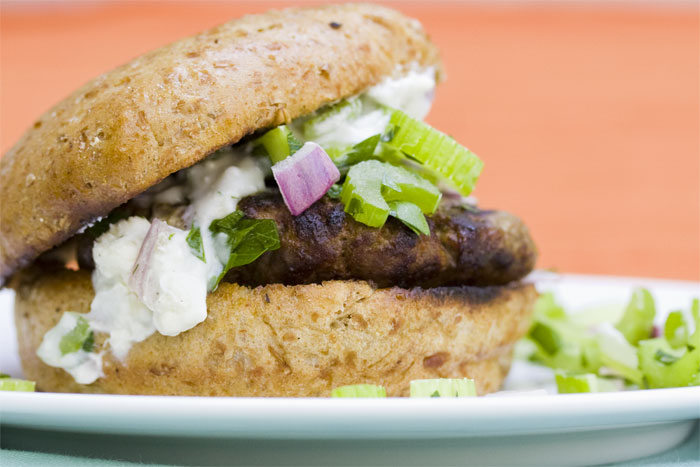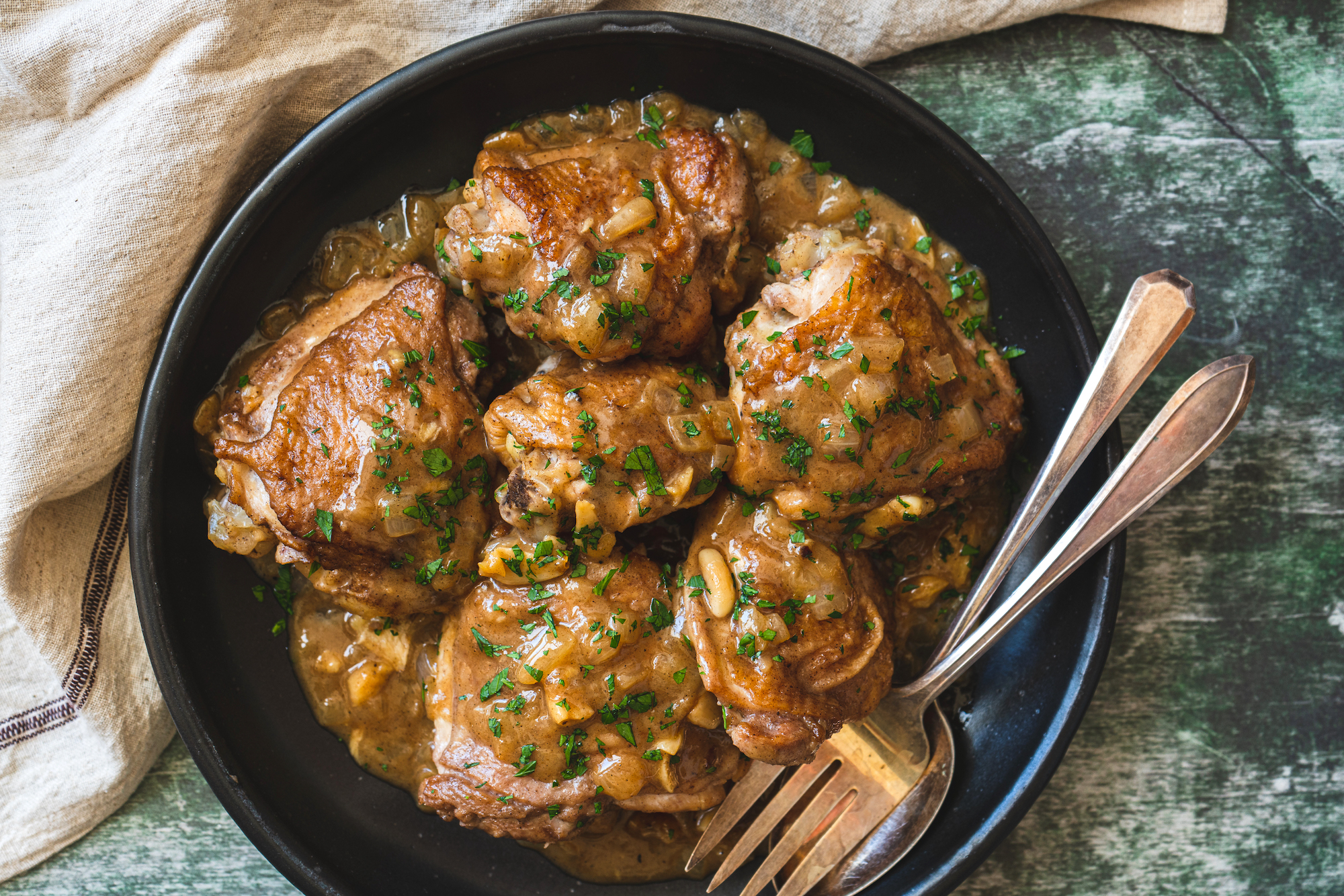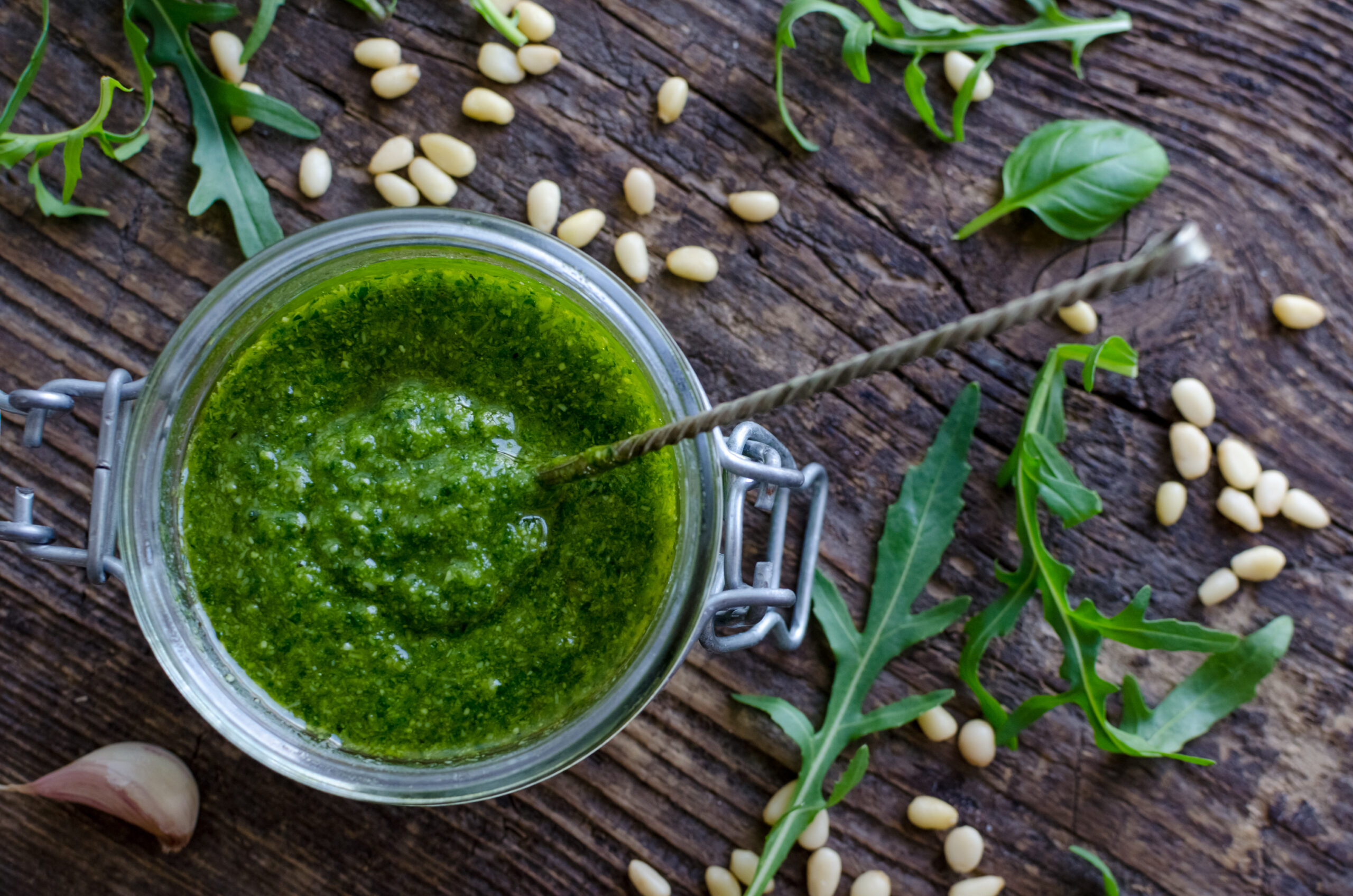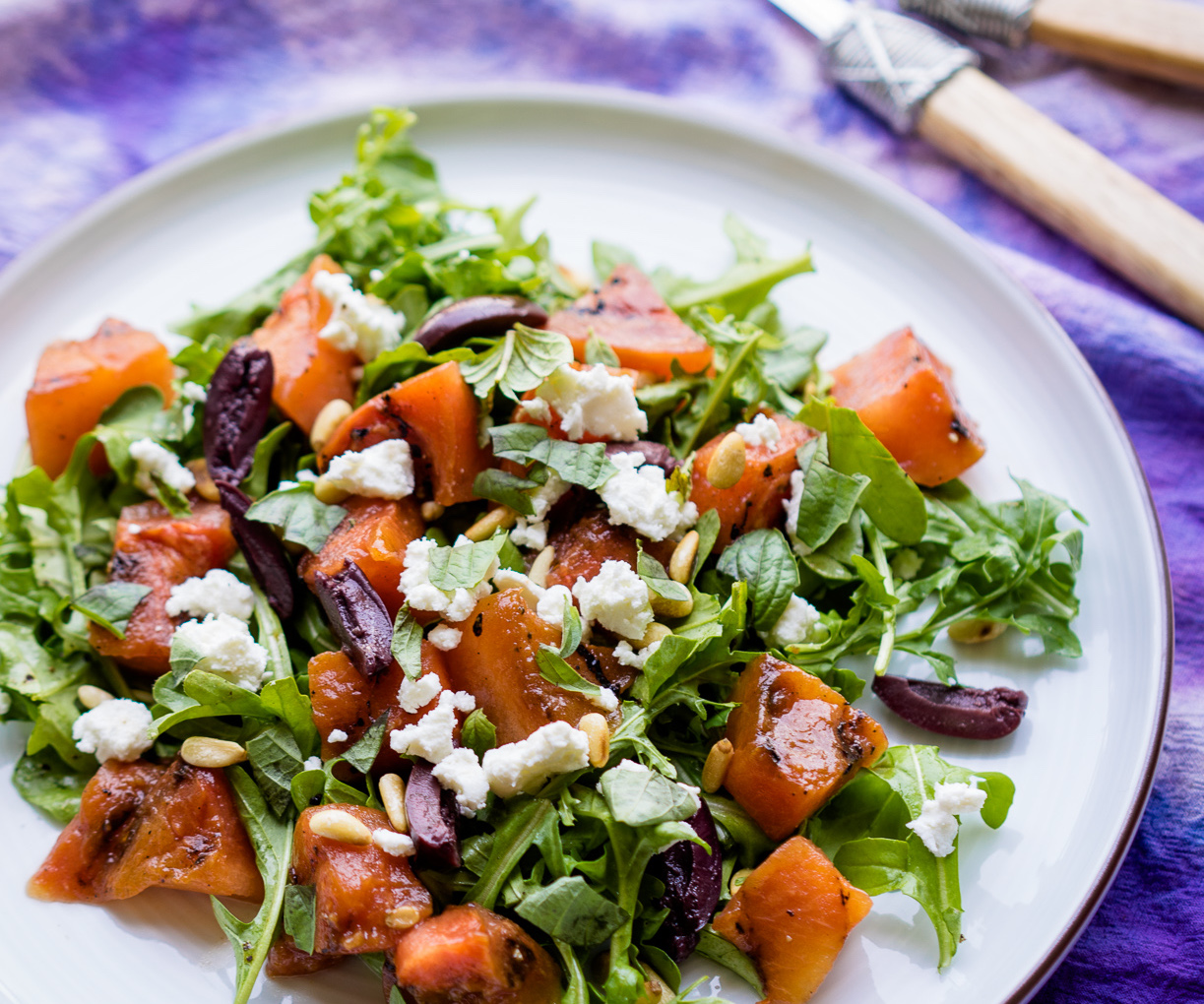The knife: No other tool is so elemental, so representative of the cook than the well-honed blade. It is, in essence, the extension of a cook’s hand and in every culture a kitchen is simply not a kitchen without one. Yet few tools in the contemporary American home are treated so casually. If you’re one of those home cooks who has a handful of knives, purchased God-knows-when, stored in a drawer with the can opener and that gadget you got for Christmas, it’s time to change your ways.
Let’s get over the first hurdle right off the bat: yes, good knives are expensive. I suggest, though, that unless you happen to be a carpenter there will be no tool in your life that you will use more often, and that your knives should command a certain respect, even reverence. A well-made knife, well-cared for, is something you will leave to your grandchildren and they to theirs – a once in many lifetimes purchase.
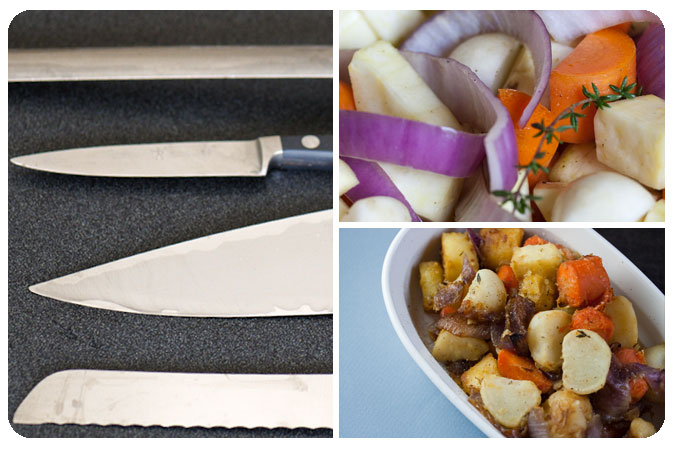 The Lineup
The Lineup
There is disagreement among chefs as to how many kitchen knives are absolutely necessary. One school holds that you need a different knife for each specific task. A few chefs believe they can do any job with just one or two. I fall squarely in the middle. While I own perhaps 30 knives, I consider just four of them to be indispensable and another to be nearly so:
Chef’s knife — The “chef’s” knife, or French knife, is the one that probably comes to mind when you think of a kitchen knife. It has a wide hilt and a straight, sharp edge that tapers to a point. Chef's knives range in length from 6 to 14 inches, but an 8- to 10-inch blade is sufficient for nearly any task.
Boning Knife — A boning knife is smaller, with a 6-inch blade roughly as wide as the handle and a straight edge that curves up toward the tip.
Paring Knife — The paring knife is smaller still, 3 to 5 inches long and narrow as the handle, and is used for finer, more intricate work.
Serrated Knife — The serrated knife comes in many shapes and sizes, but I prefer one about 8 inches long that’s offset to prevent scraping one’s knuckles on the cutting board.
The Desert Island Knife — Then there’s the knife that has been essential in Asian kitchens for centuries and is now gaining is gaining popularity in the West. What the Japanese call a “santoku” has come to be known as a “snub” in professional American kitchens because of the rounded shape of the tip. It is versatile and light, and in the “desert island” scenario, this would be the knife I would choose.
The Brand
Saying, “A knife is a knife” is like saying, “a car is a car.” Sure the car will get you there, but how safely, how comfortably, how efficiently? Just as you choose a car that fits your needs and style, you’ll want to choose the brand of knife that’s right for you. In most professional kitchens you’ll find chefs who swear by one of three brands: Henkels, Wüsthof-Trident, or Global.
Those who like the German knives, the Henkels and the Wüsthofs, like them for their classic style, their balance, their long lasting edge and their weight. These knives are fairly hefty and, for some, that’s a good thing. Conversely, the Japanese Globals are much lighter and thinner, and are made from one piece of steel from handle to tip. This not only adds strength, but is also more sanitary since there are no little crevices to hold bacteria. The folks at Wüsthof have recently followed suit with their Culinaire line, honed from single pieces of high carbon stainless steel.
In general, which of these three you choose is a matter of taste; try each and decide which feels best. (One important factor to keep in mind, though, is that while Henkels and Wüsthofs are guaranteed for life, the Globals have no guarantee at all.)
Keeping the Edge
Keeping a knife sharp is vital. I recommend using a three-stone sharpening system (my favorite is the one made by Norton Abrasives available, among other places, at JBPrince.com) and a good steel. The sharpening stones—one coarse, one medium and one fine—you'll use every few months to really hone the edge. The steel, on the other hand (the metal stick you see chefs rubbing against their knives at the roast beef carving station during Sunday brunch), you'll want to use every time you pull your knives out to removes the burrs and the wire edge that can be produced from hard use. Make sure you a steel coated with industrial diamond dust; it will last forever and all the care it needs is an occasional wash with warm soapy water.
Cutting Surfaces
Now that you’ve got nice, sharp knifes you need a suitable surface to cut on. I recommend hardwood because it gives the knives something meaty to bite into—which makes it safer for you and healthier for the knives. Hardwood does require a bit more care, though. After using, wash your board with an antibacterial soap (by hand, never in a machine) and dry it right away; a little water won’t hurt, but a lot of water and heat will ruin the wood. If the crevices on the board get too deep, give it a light sanding (once a year ought to do it) and you’ll have a fresh surface.
Holding
Once you’ve chosen the right blades and the right board, there’s the small matter of knowing how to use them. We’ll be back with Knife Skills 102: The Basic Cuts in a bit (you can also see videos of mincing and dicing in Kitchen Tips Video Clips), but for now let’s cover the basics of safe slicing. The golden rule is to curl your fingers back towards your palm and keep the blade of the knife flush up against the stretch of fingers between your first and second knuckles. It’s awkward at first, but with practice becomes almost second nature.
Kurt Michael Friese was the founding leader of Slow Food Iowa, served on the Slow Food USA National Board of Directors, and was Chef and co-owner of the Iowa City restaurant Devotay. He was also a freelance food writer and photographer, a passionate advocate for real food and a just food system, and author of A Cook’s Journey: Slow Food in the Heartland.
